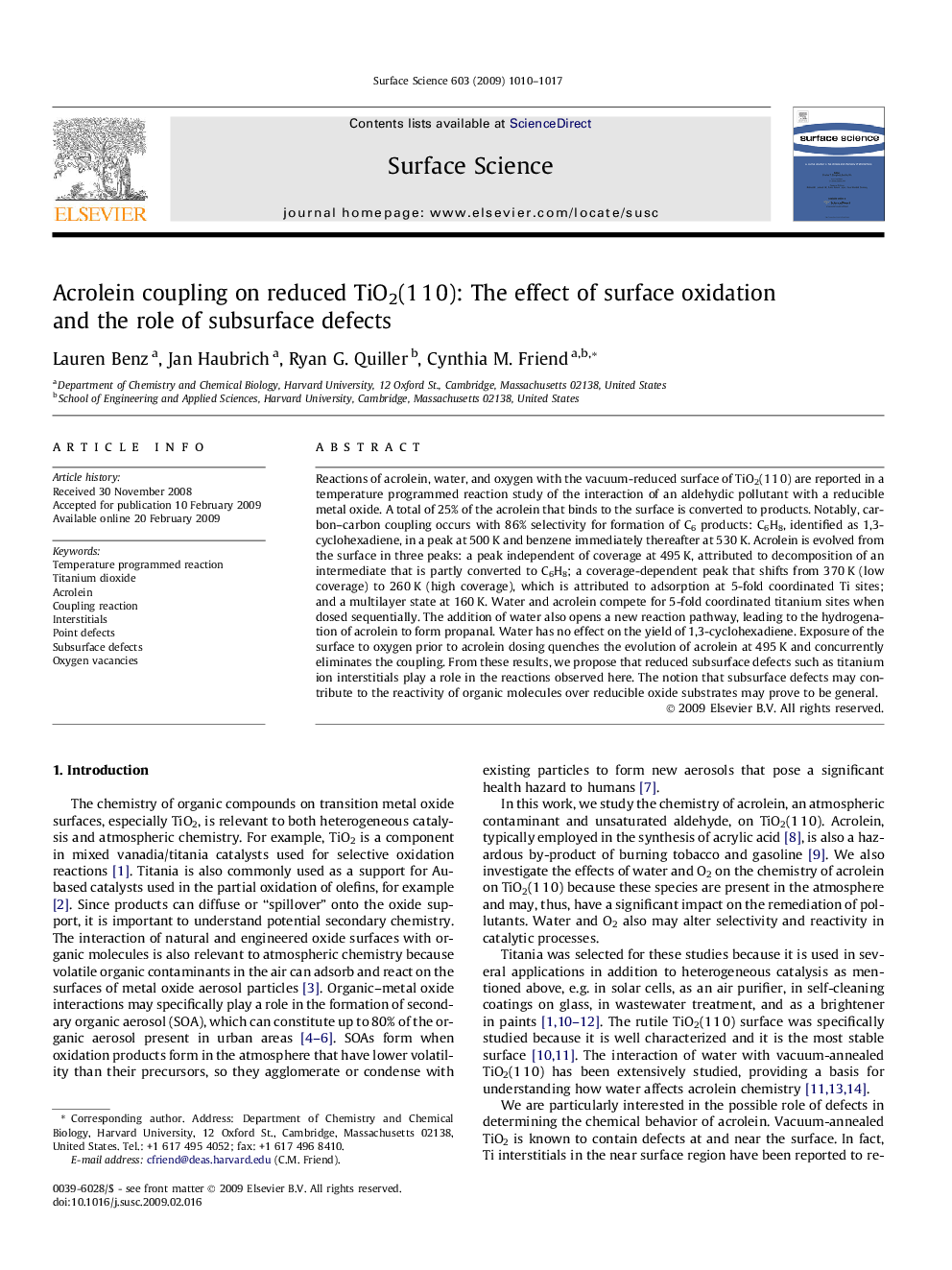| Article ID | Journal | Published Year | Pages | File Type |
|---|---|---|---|---|
| 5423924 | Surface Science | 2009 | 8 Pages |
Abstract
Reactions of acrolein, water, and oxygen with the vacuum-reduced surface of TiO2(1Â 1Â 0) are reported in a temperature programmed reaction study of the interaction of an aldehydic pollutant with a reducible metal oxide. A total of 25% of the acrolein that binds to the surface is converted to products. Notably, carbon-carbon coupling occurs with 86% selectivity for formation of C6 products: C6H8, identified as 1,3-cyclohexadiene, in a peak at 500Â K and benzene immediately thereafter at 530Â K. Acrolein is evolved from the surface in three peaks: a peak independent of coverage at 495Â K, attributed to decomposition of an intermediate that is partly converted to C6H8; a coverage-dependent peak that shifts from 370Â K (low coverage) to 260Â K (high coverage), which is attributed to adsorption at 5-fold coordinated Ti sites; and a multilayer state at 160Â K. Water and acrolein compete for 5-fold coordinated titanium sites when dosed sequentially. The addition of water also opens a new reaction pathway, leading to the hydrogenation of acrolein to form propanal. Water has no effect on the yield of 1,3-cyclohexadiene. Exposure of the surface to oxygen prior to acrolein dosing quenches the evolution of acrolein at 495Â K and concurrently eliminates the coupling. From these results, we propose that reduced subsurface defects such as titanium ion interstitials play a role in the reactions observed here. The notion that subsurface defects may contribute to the reactivity of organic molecules over reducible oxide substrates may prove to be general.
Keywords
Related Topics
Physical Sciences and Engineering
Chemistry
Physical and Theoretical Chemistry
Authors
Lauren Benz, Jan Haubrich, Ryan G. Quiller, Cynthia M. Friend,
